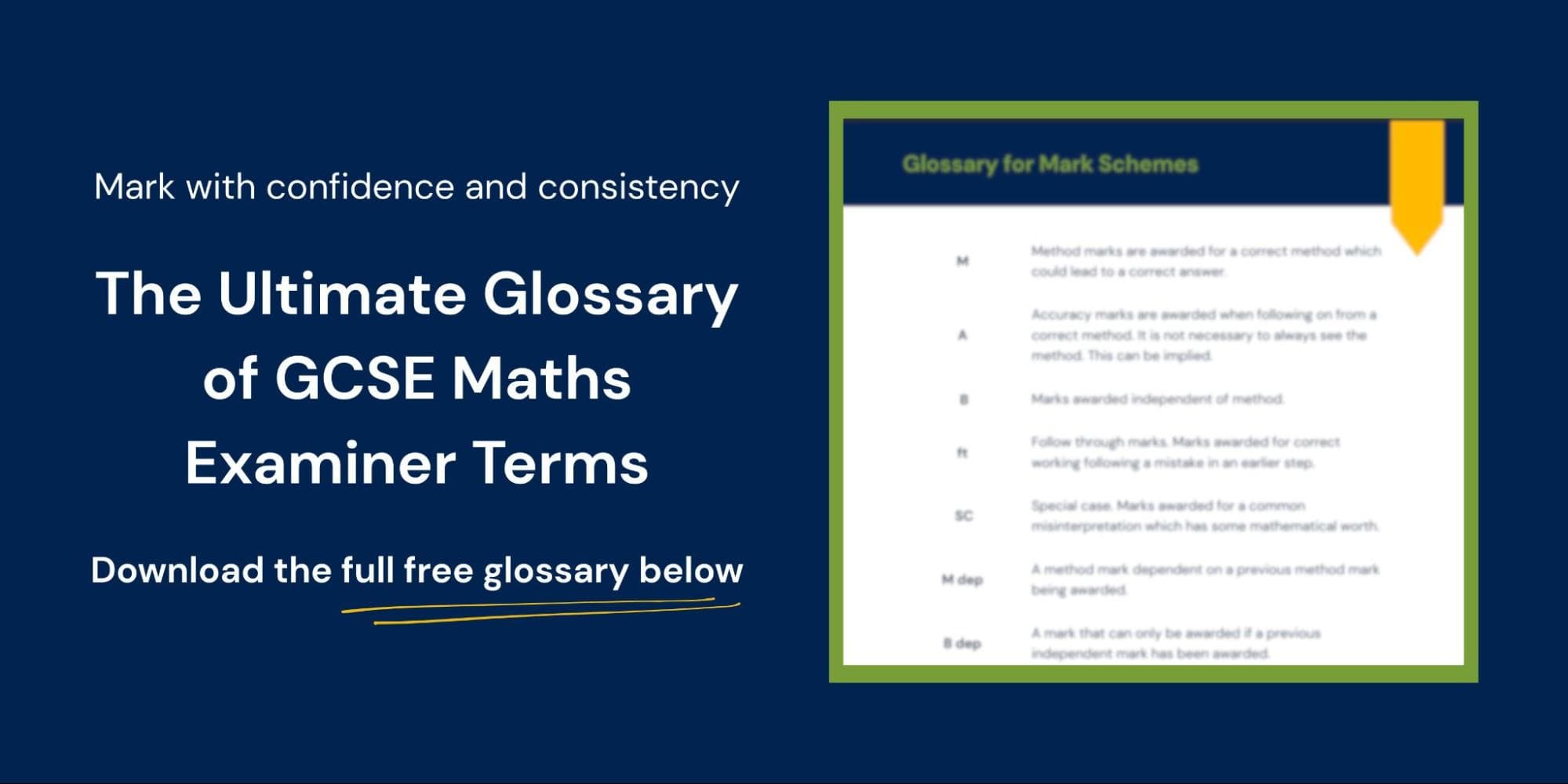For any teacher preparing their students for the mock exam season, the mark scheme is their bible. But for the uninitiated, it can look like a secret code. A cryptic string of letters and numbers, M1, A1, B1, stands between a student's answer and their final grade.
These aren't just arbitrary labels. They are the building blocks of a sophisticated system designed to reward mathematical understanding fairly and consistently. But what do they actually mean? And why is this system, for all its logic, so difficult for humans to apply with perfect consistency?
Let's decode the marking language and explore the nuanced thinking that goes into every single mark.
The 'What': Defining the Three Core Mark Types
At its heart, the system is designed to separate the process of mathematics from the final product.
M Marks (Method Marks): The 'Recipe'
Method marks are awarded for demonstrating a correct mathematical process. This is the most crucial mark type for rewarding a student's understanding, even if they make a clumsy calculation error. An M mark says, "this student knows how to tackle this problem."
- Example: In a question involving the quadratic formula, a student would earn an M1 for correctly substituting their values into the formula, even if they make a mistake when calculating the final answer.
A Marks (Accuracy Marks): The 'Final Dish'
Accuracy marks are awarded for a correct answer or a correctly calculated value. Crucially, A marks are almost always dependent on a preceding M mark. You can't get an A mark for a fluke correct answer that appeared from incorrect or non-existent working. An A mark says, "this student has executed the correct method accurately."
- Example: Following on from the above, a student would earn the A1 mark for finding the correct final values for x, but only if they have already been awarded the M1 mark for a valid method.
B Marks (Independent Marks): The 'Facts'
Sometimes called 'bonus' or 'independent' marks, B marks are awarded for a correct piece of information that doesn't require a multi-step method. They stand alone and can be awarded regardless of other working.
- Example: A B1 mark might be awarded for correctly reading a value from a graph, writing down a correct formula from memory, or stating the correct units (e.g., cm²) for an answer.

Mark Scheme Example
Want to master the full language of the mark scheme?
This post covers the big three, but what about cao, soi, oe, or ft? Our comprehensive glossary decodes all the essential terminology used by examiners.
[Download your free Maths marking glossary here]
P.S: We have a Science version here too!
The 'Why': The Logic of Fair Assessment
This M-A-B system is the bedrock of modern maths assessment for two key reasons:
- It Rewards Partial Understanding: It fairly credits a student who understands a complex method (M1) but makes a careless slip under exam pressure.
- It Penalises Guesswork: The M-A dependency ensures a student can't simply write down a lucky answer and receive credit without demonstrating how they got there.
However, this is where the human challenge begins. While logical in theory, applying this system consistently is incredibly difficult. A teacher must exercise professional judgment on every script: Is that messy working a valid attempt at a method (M1)? Or is it just a jumble of numbers? Has the student implied the method, even if they haven't written it down? This is where subjectivity and inconsistency inevitably creep into the marking process.
The Traditional Fix: The Examiner's Conference
To solve this, official exam boards run rigorous standardisation meetings. Senior examiners spend days reviewing dozens of real, anonymised scripts, debating the "grey areas" and coming to a collective agreement on how to interpret the mark scheme. This process is vital for national consistency.
For schools marking their own mock exams, however, replicating this level of forensic standardisation is almost impossible. The result is that a student's paper marked in one school could receive a different mark to an identical paper marked in another, undermining the reliability of the data.
The AI Solution: Flawless Consistency, Every Time
An AI marking platform is designed to solve this very problem. It learns the logic of the M-A-B system and applies it with the precision and consistency of a senior examiner.
- It Understands the Method: The AI is trained on millions of data points to recognise valid mathematical processes (M marks), not just final answers. It can identify a correct method even if it's presented in an unusual way.
- It Enforces Dependency: The AI perfectly applies the M-A dependency rule, ensuring accuracy marks are only awarded for work that is methodologically sound.
- It Delivers Perfect Consistency: The AI makes the same judgment on an ambiguous method on the 10,000th script as it did on the first. It eliminates the "human factor" of fatigue and subjectivity, effectively giving every school the power of a national standardisation conference for their own mock exams.
The M, A, and B mark system is a brilliant tool for fair assessment. AI ensures that its powerful logic is no longer just a theory, but a perfectly and consistently applied reality for every student.
Now that you've mastered the mark scheme, the real work begins: getting students to engage with your comments. Is there anything more frustrating than seeing a student look only at the score?
If that sounds familiar, we've got you covered with some practical solutions to get students engaging with your comments.
